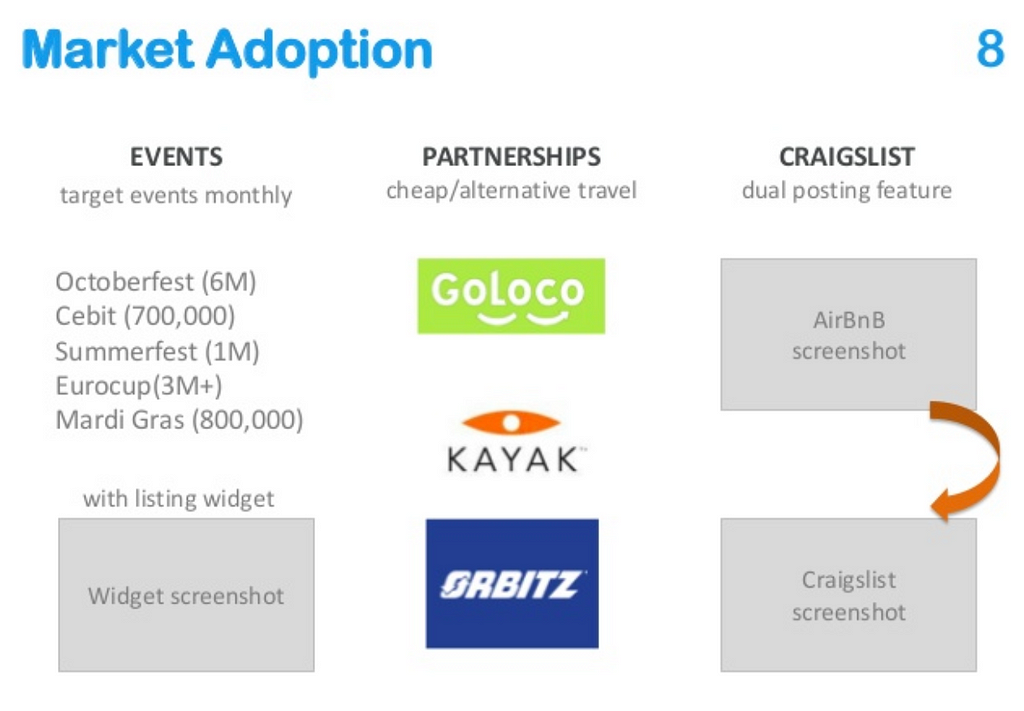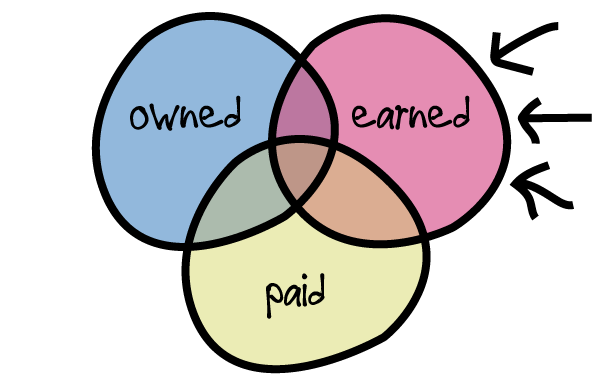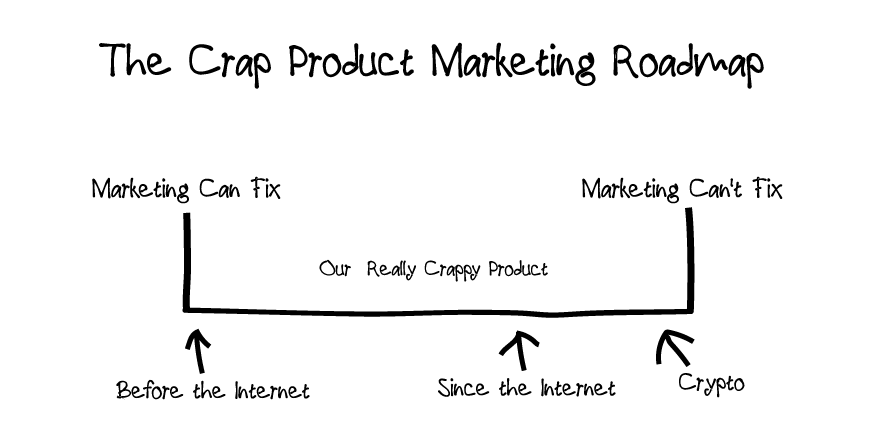Latest news about Bitcoin and all cryptocurrencies. Your daily crypto news habit.

The late comedian Bill Hicks famously ripped into marketers, telling them: “There’s no rationalisation for what you do and you are Satan’s little helpers. Okay — kill yourself.”
In the wake of scam projects and overzealous ICOs, the disdain Hicks showed for marketing reverberates around the crypto space, but marketing itself is not intrinsically evil; moreover, marketing is a tool which has been exploited by bad actors, poisoning the well for everyone else.
When McDonald’s advertise their latest burger, does this make marketing bad because society deems McDonald’s as junk food? And when The Red Cross advertises for donations to help refugees in Syria, does this make marketing good?
The truth is that even Hicks relied on marketing to sell his shows. His hatred for marketing was really for those admen telling you that drinking a Coke will make you happy or driving a BMW makes you attractive. I know how it works, I have sat in those meetings where morally bereft vultures brainstorm ideas to sell you more shit you don’t need, but this is not a reason to reject marketing as the principles of morality are at the door of what is being marketed and how, not the act itself.
Traction is Hard
As any entrepreneur knows, building a business is hard, and one of the hardest things is building traction. Without traction there is no long-term viability and marketing is a tool to help entrepreneurs deliver their vision.
Marketing isn’t just about scaling a company fast, it is about finding a market alongside your product in preparation for scale. Startups will often focus on engineering with little thought for marketing, but embedding this skill from the start will ensure that the product will more likely find a market.
With the goal of any business (or token economy) to firstly survive, and with DappRadar showing such low usage numbers, why do crypto projects have such an aversion to marketing?
 DappRadar Etheruem Application Stats
DappRadar Etheruem Application Stats
But what about Bitcoin I hear you say. Bitcoin is decentralised, Bitcoin doesn’t need marketing and look how it has grown into a +$100bn network with millions of hodlers. But Bitcoin has and does rely on marketing, it just uses a different toolset to centralised businesses and we can see this by looking at how marketers split their channels:
- Owned: channels they control, such as a website
- Earned: channels where others talk about you, such as social media
- Paid: channels where you pay for reach, such as Google
Being decentralised, Bitcoin does not own any channels, even the assets such as Bitcoin.com and the @Bitcoin Twitter handle are not held by Bitcoin. They can’t be, as there is no central authority to claim IP rights to them.
Outside of Roger Ver paying for advertising, Bitcoin relies almost entirely on word of mouth, an earned media channel. From blogs to podcasts to people telling their friends “Hey, Bitcoin is awesome, you should check it out,” Bitcoin’s growth has been due to the eagerness of users to spread the word.
And this is marketing, decentralised marketing.
Why Are Crypto Companies Adverse to Marketing?
Whether you intend to build a company to enrich yourself or a new decentralised economy for some higher purpose; if you are raising capital, you have a responsibility to your investors to create something sustainable. This is why any pitch on the Sand Hill Road requires a growth slide as part of its deck.
Build it and they will come is a fallacy, even more so in crypto, and a simple search on Slidedeck will show you that some of the best Dot Com investment decks include a growth slide in their pitch. Slide 8 of the highly regarded AirBNB pitch deck highlighted events, partnerships and Craigslist as growth channels, and whether these were part of the final magic formula that led to them building a multi-billion dollar business, they did require marketing and they unquestionably now operate a multi-channel marketing strategy.
 AirBNB Pitch Deck — Market Adoption Slide
AirBNB Pitch Deck — Market Adoption Slide
The Internet Changed the Game
Advertising was much easier before the Internet, all you had to do was make a product, create a campaign telling everyone why your product is amazing, choose between ITV or Channel 4* and then sit back, smoke a cigar, and pat yourself on the back while the money rolled in.
*Note: prior to satellite television, there were two terrestrial TV channels in the UK which you could advertise on
But the Internet came along and ruined all the fun on Charlotte Street (Madison Avenue in New York). I wrote about this in my industry resignation letter: Online Advertising Does Not Work, where I highlighted the problems faced by the advertising industry when trying to adapt their traditional creative campaigns to an interactive channel.
“This increasing ability to make rational and informed decisions has in turn changed customers’ buying behaviour. Emotional brand connections are being replaced by functional relationships based on price, quality and service, diminishing the ability of advertising to influence customers.”
No longer can marketing sell a crappy product, the Internet is an unforgiving place full of reviews and viral campaigns which have destroyed products and businesses. Though this didn’t stop the admen from trying to take a piece of the Internet pie, but guess what? They screwed it up! The banner ads and tracking scripts which have strangled the Internet has led to a resistance in the form of ad blockers and browsers such as Brave.
The message is clear, we do not want your crappy ads.
Marketing Is More Than Adverts
Marketing is no longer just about adverts, it is now the entire experience of the customer:
- Awareness: marketing, advertising, PR
- Conversion: product demo, price, conversion optimisation
- Retention: onboarding, customer service, product development
Any marketing campaign must consider the entirety of the customer relationship, something Ash Maurya calls the customer factory. As a sister to The Lean Startup model developed by Eric Ries, the Customer Factory is a tool for creating an economically sustainable business.
ICOs take note, while your treasuries are crashing and your runway is looking shorter, if you are unable to create a sustainable customer factory, then there will be only one outcome.
If you have managed to get over your fear of marketing, you accept that your if-you-build-it-they-will-come strategy is flawed and that your handful of Telegram bag holders are not going to create a sustainable business, then we can take a closed a look at what you can do and the considerable challenges you face.
Please note: marketing will not save crappy products or a solution to a problem that does not exist, even great products have failed because they haven’t been able to build traction. But for now, let’s assume you have a fantastic product and you have solved a problem that millions of people want solving. Your customer factory is your formula for creating traction, thus survival and ultimately growth.
The customer factory is a model for dividing the customer journey into simple steps, something us evil marketeers call a funnel. It allows you to focus on optimising each step to ensure maximum throughput.
Let’s forget your friends and the handful of early crypto adopters, our target here is mass market. Your first battle is not with how great your product is, it is the psychology of convincing potential users that they should consider your product. As Ash says:
“If you can’t get people inside your customer factory, it doesn’t matter what’s inside.”Further reading — The Science of How Customers Buy Anything
Taking a potential customer from Point A — their currency reality without your product, to Point B — their new reality where they need and use your product is achieved with:
- Acquisition (reach): your unique value proposition — the message(s) which will get their attention and where they are placed
- Activation (engage): the demonstration of your product which explains their current reality and the benefit of the new reality your product creates
- Revenue (convert): the value exchange which converts, whether monetary or a derivative (our product is free, but we sell your data)
Even with a great product, excellent messaging/placement, an amazing demo and a great value exchange, you will still face two opposing forces:
- Friction: the negative little voice in the head of the user which tells them they do not need this
- Inertia: the other negative little voice that tells them it is too much effort
Only by answering everything above will you be able to create a sale. I know, I said sale, this sounds terribly corporate, and the anarchists will crucify me. Sorry to slap you with a wet fish of reality but your survival has no time for being too cool for marketing.
Once you have achieved a sale you are not done, nope, your next job is to retain your customer. Even if your product is super amazing, they may forget about it or not understand how to use your product and give up. Your job is to nurture your relationship with them, and if you do a great job, then they will become an advocate and help sell your product for you, double win!.
Why This Is All Much Harder for Crypto Companies
Remember previously when I explained how advertising was more straightforward before the Internet? Well, let me tell you the cautionary tale of the Kryptonite Evolution 2000, a bike lock which the company claimed was so secure it could not be broken by “bolt cutters, saws, hammers and chisels”, so secure that not even Superman could break it.
…apart from one small problem, you could open it with a Bic pen, rendering the lock entirely useless, and what followed was a damaging viral campaign across the Internet.
Where the Internet forced companies to raise their product game, crypto companies face even tougher challenges:
- Addressable market: the crypto space is still in relative infancy compared to the Internet. Unless you have built something where the crypto layer is invisible to the user, you face a smaller addressable market which means every aspect of your product and customer factory must be operating at maximum potential to ensure you are able to build sustainable traction.
- Friction: there are so many new friction points with crypto. Imagine someone wants to use your super new product but payment is in Bitcoin. Not only do you need to educate them on how to use your product but they need to learn how to buy crypto, use a wallet, manage security and so on. Alas, most likely this is a mass market drop off point.
- Anonymity: remember when Google and Facebook banned crypto ads? Even though they have relaxed their rules, there is an increasing awareness of privacy, and as I mentioned ad blockers and browsers like Brave are hiding adverts, so how do you reach these people? Further, many decentralised services do not require an account, so how can you execute a retention strategy when you don’t even know who you are talking to?
So What the Heck Should We Do?
As I wrote in my article, How to Fix the ICO Market, let’s not pretend these crypto startups are anything other than a tech startup facing the same questions:
- What problem are you solving that people are having?
- How will you solve this problem?
- What is the economic model that will ensure longevity?
And even if you have answered these questions, what is your growth strategy when considering the many additional challenges that crypto faces?
Even if you have raised a pile of cash to hire engineers and build cool things, at some point you are going to have to demonstrate growth and economic viability, especially if you raised venture money.
Marketing is an essential part of your business, baking the user into your product roadmap, considering who they are, how you reach them and why they should care. If you are not thinking about marketing or are struggling with usage numbers then my recommendation for you is as follows:
- Read The Lean Startup by Eric Ries, particularly chapter 10 on growth
- Read Scaling Lean by Ash Maurya, all of it
- Check out Ash Maurya’s Lean Canvas and Customer Forces Canvas, and start using them
- Stop thinking you don’t need marketing
There are bad people, bad companies, bad products and bad marketing strategies, but marketing itself is not bad, and you ignore it at your peril.
If you have any questions then please feel free to email me. You may also like my blog or my crypto podcast, What Bitcoin Did.
Further Reading
- Let’s talk about the problems of ICO Marketing: 16 opinions
- The Science of How Customers Buy Anything
- Traction is the One Metric to Rule Them All
- Love the Problem, Not Your Solution
- Online Advertising Does Not Work
We Need to Talk About Crypto Marketing was originally published in Hacker Noon on Medium, where people are continuing the conversation by highlighting and responding to this story.
Disclaimer
The views and opinions expressed in this article are solely those of the authors and do not reflect the views of Bitcoin Insider. Every investment and trading move involves risk - this is especially true for cryptocurrencies given their volatility. We strongly advise our readers to conduct their own research when making a decision.



